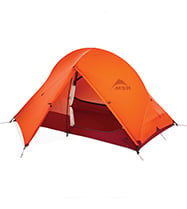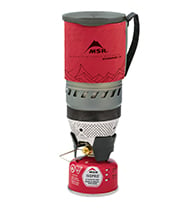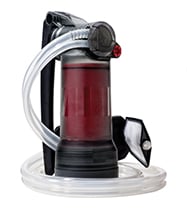Himalayas: Preparing for and Hiking at High Altitude
I’ve joined friends and photographers, Dan and Janine Patitucci for a ten-day Himalayan adventure trek across the Gangotri Glacier organized by Ruck Sack Tours. This glacier is one of the main sources of the Ganges River, and one of the largest in the Himalaya. However, it is rapidly receding. We scramble over rock and rubble where ice once stretched to reach Tapovan, at the base of Shivling, the mountain we’ve come to admire.
Itinerary basics:
- Gangotri Glacier Trek with Ruck Sack Tours
- 3-day drive, 1 free, 10-day trekking, 3-day drive, 1 free in Delhi
- Two main base camps in high meadows
- Four nights at Tapovan (4300 M) at the base of Shivling
- Three nights at Nandanvan (4400 M) at the foot of Bhagirathi
- Two nights at camps on the way in and out
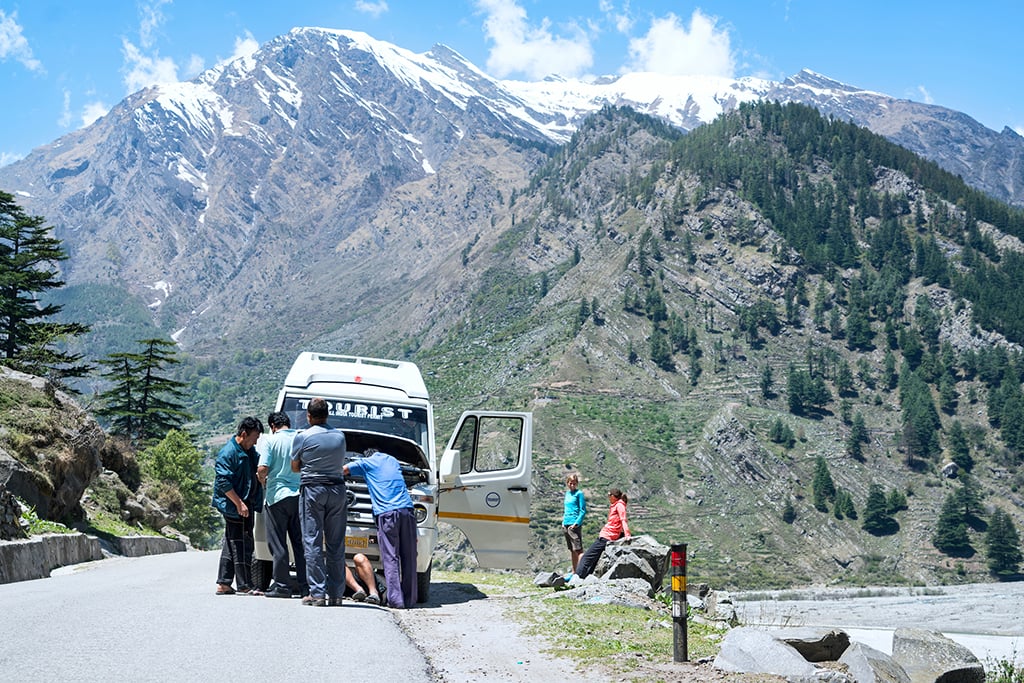
Getting there
Tourist vans, like ours, decorated with tassels and hand-painted logos wrap around the mountain road like women coiling sarees around their waists after tossing freezing water over themselves in the Ganges. The road is teeming with pilgrims en route to the river source by bus, or truck, or by foot. We drive three days from Delhi to reach Gangotri, a sacred destination for Hindu pilgrims, and the start of our Himalayan hike.
The 500 kilometer drive takes nearly 20 hours on the road. Delhi to Rishikesh (240 kilometers in 8 hours); Rishikesh to Uttarkashi (175 kilometers in 7 hours); Uttarkashi to Gangotri (100 kilometers in 4-5 hours, plus a few more to fix the broken-down van).
Shashank, our guide, handles all the details: transportation, lodging, food, and trekking permit. Getting to the starting point of the hike could have been the biggest challenge of the trip without Shashank’s help—navigating busy roads, uncertain menus, and finding a place to sleep with a bathroom, all in time to meet our permit’s entry date to Gangotri National Park.
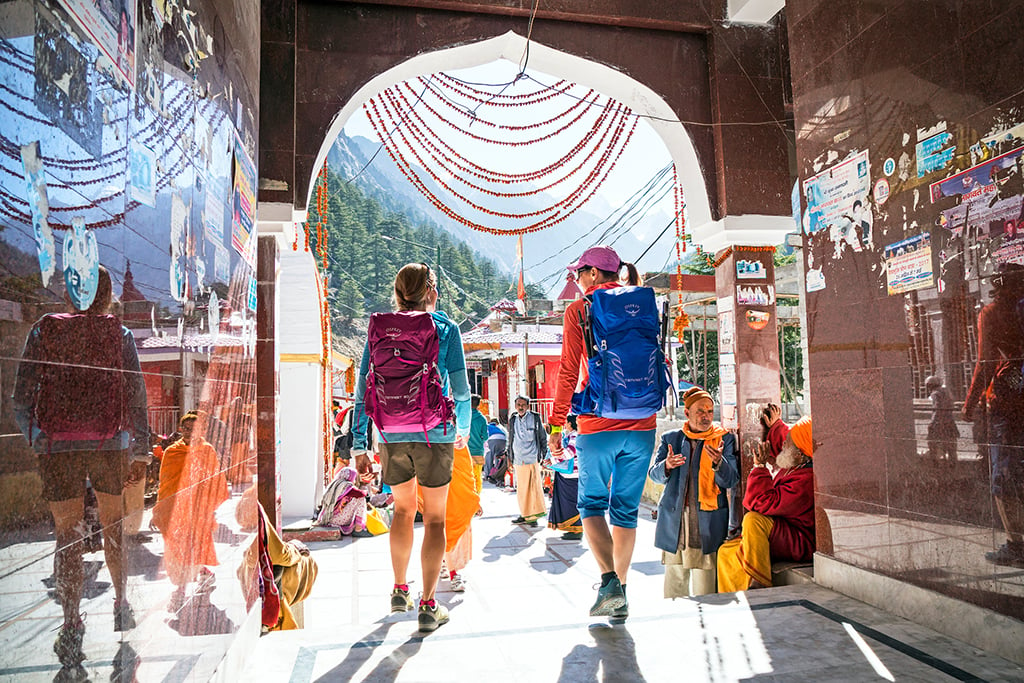
Along the way, we visit ashrams, temples, street markets, an evening aarti to the goddess Ganges. We stand in the river, cram into a taxi to ride through the jumble of Rishikesh, dodge cows walking the wrong direction in traffic. We walk with a swami, and drink herb-tea offered to us in metal cups from a sadhu. The heat and chaos of the city drifts further away. The air clears and cools. From Gangotri, we finally lace up our boots to continue what’s already been a big adventure.
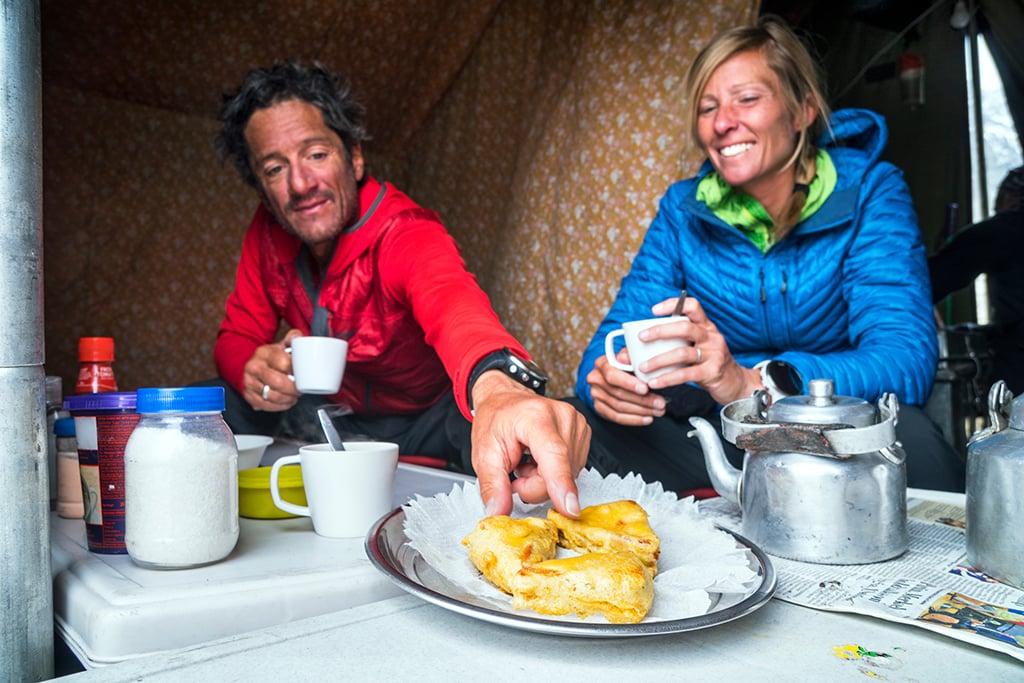
How I prepared for hiking at high altitude
Being in good physical shape and training in altitude whenever possible helps prepare for the Himalayan heights. I frequently run between 2000 m – 3000 m elevation. On our trek, above 4000 m I feel slower, and just before 5000 m walking uphill starts to feel significantly more difficult, especially trying to move quickly. Part of the challenge is accepting moving at a slower-than-usual pace and feeling more out-of-breath.
I tried to gain a little extra weight before traveling to offset the effects of altitude. There’s also the likelihood of dehydration from Delhi Belly (diarrhea from the change in diet), so it can be important to have a few pounds to spare to stay healthy when spending extended time at high elevation.
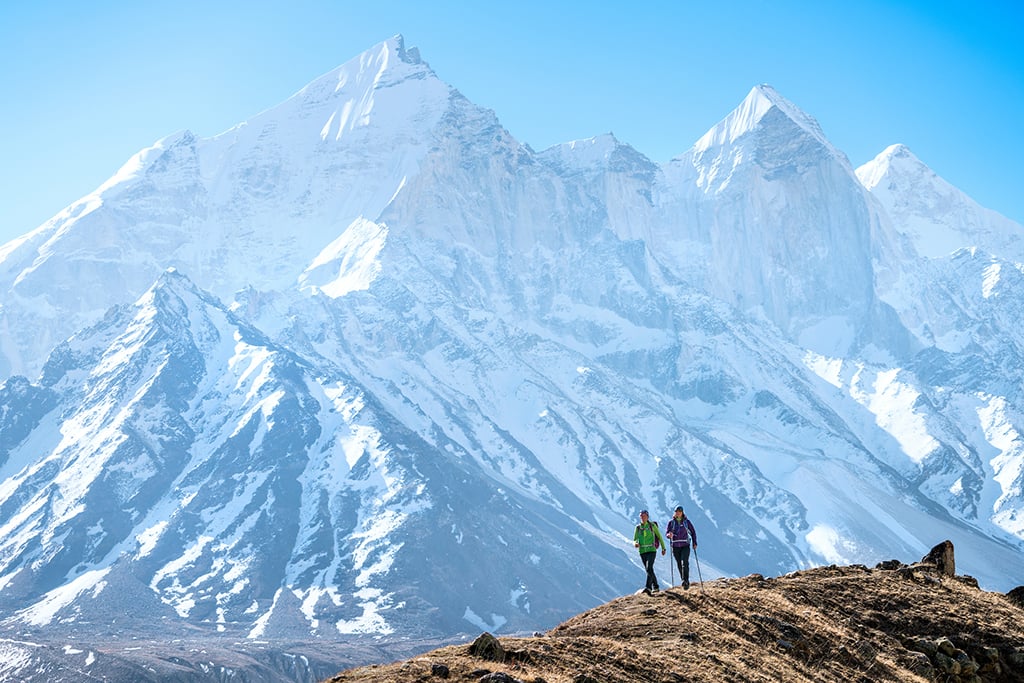
Tips while hiking at altitude
Either we were lucky, or did something right. Besides minor headaches around 5000 m, our group didn’t struggle with the elevation. Altitude wasn’t a limiting factor for our trek, but going higher might feel like a bigger challenge. Here’s a few things that made acclimatizing easier:
Gradual gain. We slept two nights at Gangotri (3050 m) before beginning the hike. From there, we kept our daily vertical gains under 700 meters.
Slower movement. Despite being eager to see what’s around the next bend in the trail, we adopted a slower pace for both walking and running. Especially moving up steep slopes, each step is more deliberate to conserve energy.
Drink and eat. It’s important to drink water throughout the day during hikes, even more so at higher elevation. We didn’t miss tea time for extra afternoon hydration and deep-fried snacks: samosa, pakoda, vada. Indian food might taste even better in the mountains.
Rest. Moving at elevation takes more effort. Take a few minutes to stop and enjoy the view when breathing seems labored. A pre-dinner nap isn’t so bad either.
Be flexible. We woke early (typically by 4am) to hike in the morning sun and rested during the afternoon thunder and snow storms. Things change quickly, the weather, the plan, the way our bodies respond to activity and food. Let go of control and enjoy the experience for what it is.
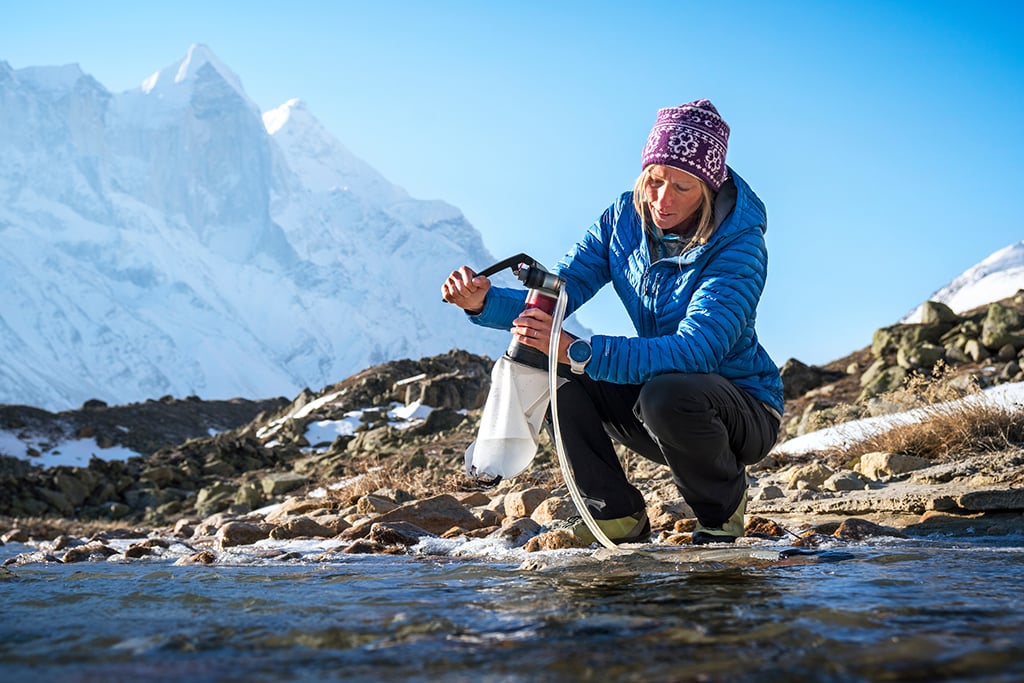
Thoughts on gear for hiking at high altitude
Water: With millions of people washing their laundry, bodies, and sins in the Bhagirathi River, one of two source streams of the Ganges, it seems like a good idea to filter our drinking water. Although water flowing from Gaumukh, the glacial source of the river, is said to have no impurities, it is clouded by silt, so we opt to filter all our drinking water. At base camps, we use the MSR Guardian Purifier. For day hikes and trail runs, the MSR TrailShot water filter fits into our small packs.
Stove: Coffee is our primary concern in the morning. Waking up early, we use the MSR WindBurner Stove System to make a quick cup before our pre-breakfast hikes.
Sleeping: The MSR Access four-season tent is lightweight, but strong enough for Himalayan thunderstorms. Snow fell each afternoon and sometimes through the night. Durability and warmth are concerns at high elevation, and the Access takes care of both.
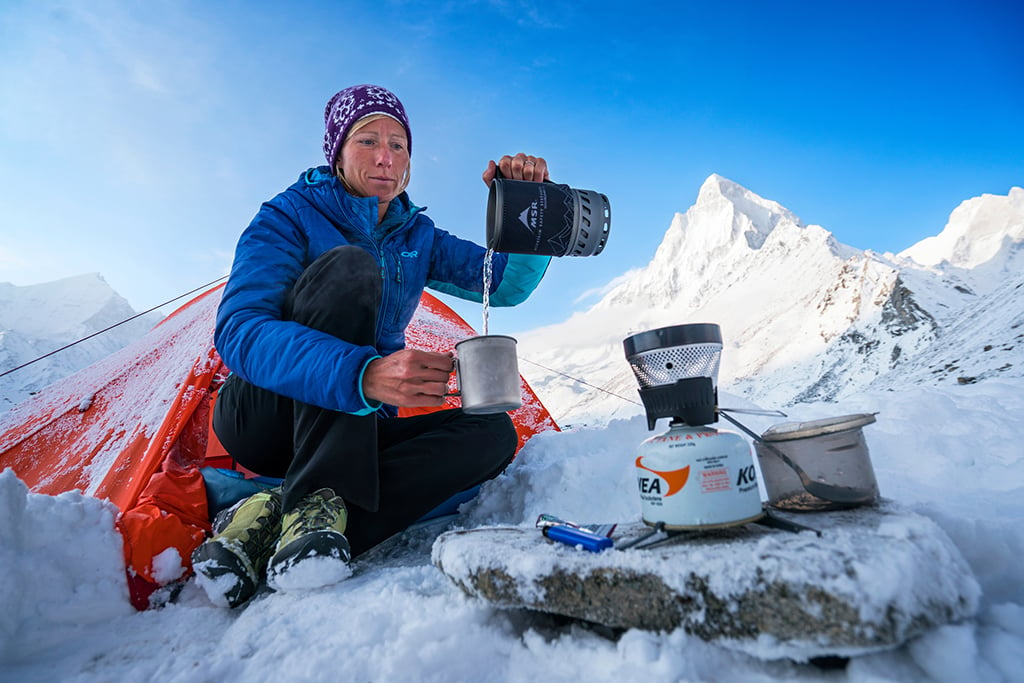
Gangotri Glacier Trek terrain
Besides crossing the trail-less rock-glacier, the walk is fairly smooth. The trail is worn and the climb is gradual. But even from the perspective of experienced hikers and mountain runners, we are stunned by the flip-flop wearing porters, lugging double loads up and down the rocky sections with hidden ice. We walk moraines, above the glaciers. We are at high altitude, but the peaks above us are much higher—summits for climbing not trekking. Our travels seem modest and safe, but surrounded by the potential for big, technical climbs. Rock pile memorials to fallen climbers remind us of the dangers of the Himalaya above the blue-sheep covered meadows where we camp.
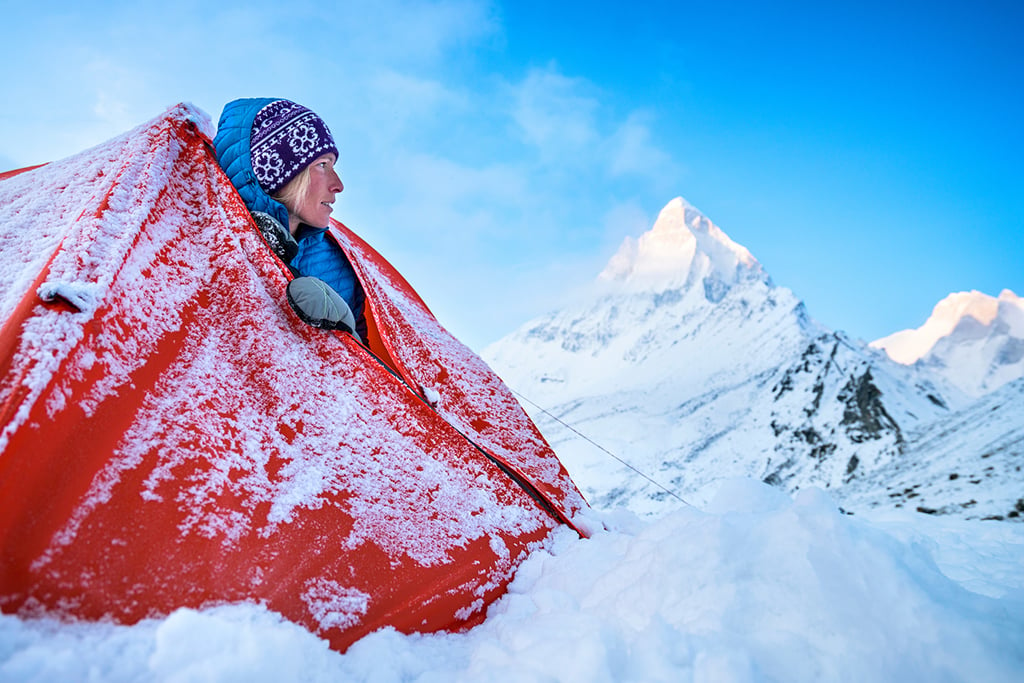
A unique experience
We didn’t just head to the Himalaya, alone, with only a sleeping bag. Our hike nearly becomes an expedition. To get to the trek start we travel with a guide, a driver, and a liaison officer. We leave Gangotri with a guide, a cook, his assistant, and a pack of 9 Nepali porters, who had come to India to find work.
For a stubbornly independent, budget-traveling, do-it-yourself-er, who always carries the bare minimum—porters, a kitchen tent, a toilet tent, and mass quantities of deep-fried, homemade Indian food seem a bit luxurious for a trek. But after we convince the cook not to cut the crust off our bread, we feel less imperialistic and savor these comforts in the company of our expanding party.
Plus, setting up base camp gives us days of moving without all our gear. We can explore from camp, cover more ground, and even go for a few runs.
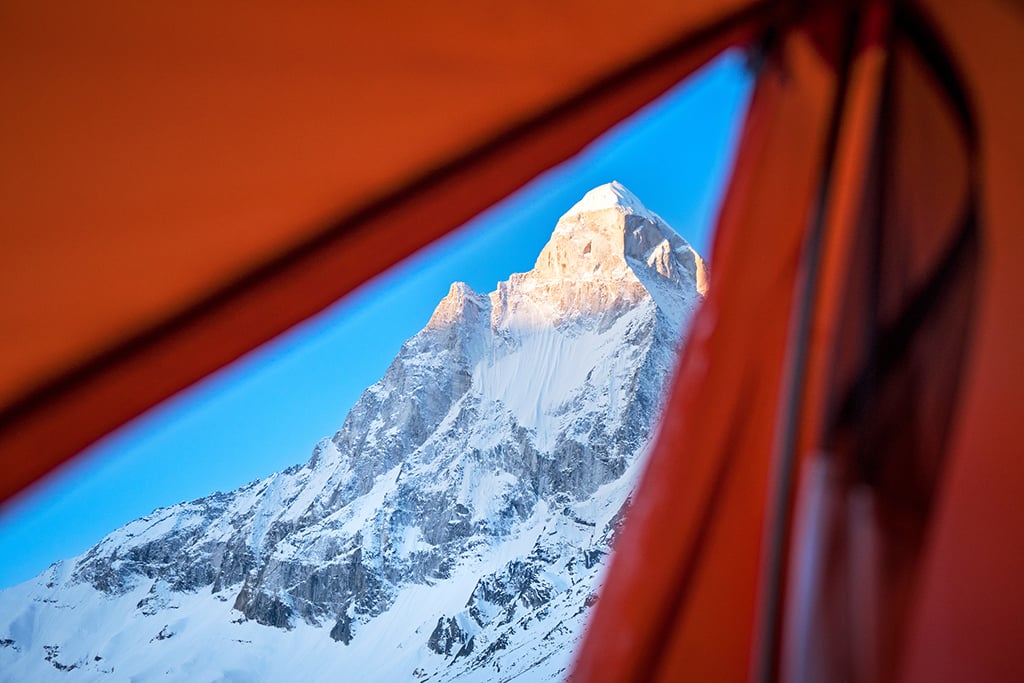
Other things to know before you go
Road Traffic
The journey starts before the trek. We make our way to the trailhead through a jumble of every type of traffic: cars, buses with laundry drying out the windows and four bodies in every 2 seats, rickshaws, open taxis, horse-carts, yoked-water buffalo, barefooted pedestrians carrying huge piles of sugar cane or overstuffed bags on their heads, cows walking whichever direction they please, people piling onto produce sacks on truck beds with tires and goats and logs. Whole families spoon onto motorcycles. People push bicycles uphill on the highway; sarees flag in the wind as women side-saddle on scooters holding a phone to the driver’s ear. Goats and pigs and chickens and dogs and monkeys and elephants and more cows. And more people. Horns blow. Everything in a tangle of movement and color and sound.
Trail Traffic
On our way out, we stop to sit on a boulder near Chirbasa, 9 km from the park entrance. We watch trekkers pass; pilgrims making a once in a lifetime walk to Gaumukh. Many of these pilgrims are finishing their first day of walking, and will do one or two more days as their pace and energy allows. Older couples in sun visors stop every three steps for breath. There are barefooted sadhus and guys in their early 20s with Bollywood haircuts slick and shining, manicured mustaches, tight jeans. Decorated donkeys are weighted by kerosene loads or carrying that guy in a pink camo t-shirt and gold chain. There’s a group of students speaking English. And the unexpected, regular-guy hikers who greet us with, “Hey man,” instead of “Namaste,” as they escape the extreme heat of India’s cities. Women all in orange offer me pine needles to carry. Indian and Nepalese porters carry loads nearly equal to their own weight. The trail will be busy until the summer monsoons.
Size
We reach the end of the moraine passing 5000 M along the way, the highest elevation I’ve ever been. Without a summit, without a point of destination, just along the way, far beneath the peaks. It’s humbling to reach a high point and discover so much higher surrounding us on all sides.
Population
Besides posing for selfies with intrigued locals, or exchanging small nods and generous smiles, we feel unnoticed or at least un-bothersome to the routine of so many lives blurring together in the cities on our way to the vastness of the mountains. In a country of nearly two billion people, there’s still space to stare up at the mountains in complete solitude. I stood alone, at 3 am, the iconic Shivling mountain glowing in the white moonlight. It’s one of those moments I recognized for its rareness while in it, and so I stood in the snow until my feet became cold.
Related Posts:
- Explore MSR’s Access™ Winter Backcountry Tents
- How to Choose a Winter Tent
- Best 4-Season and Mountaineering Tents
Words by Kim Strom | Photos by Dan Patatucci

